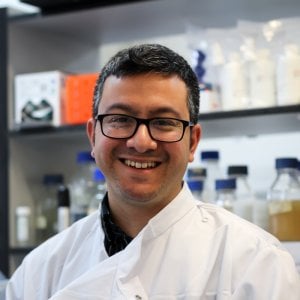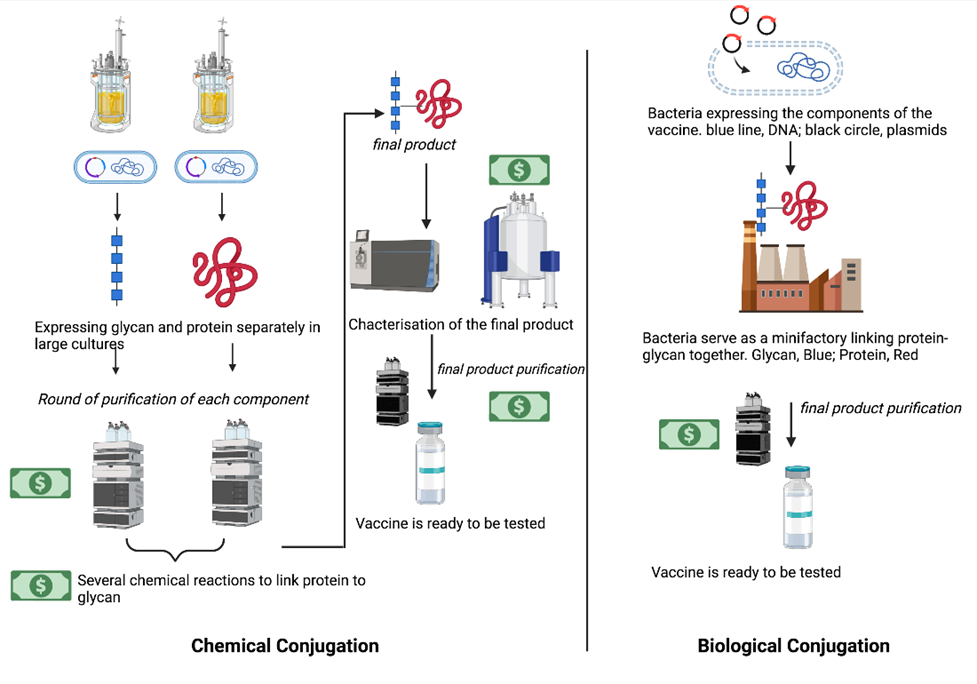We asked Dr Cuccui about the potential of bioconjugation for vaccine development, which is an essential biological process that links molecules together - highlighted in our previous article.
Why was the first example of bioconjugation considered a breakthrough?
The discovery of protein glycosylation machinery in bacteria meant that the ‘glycoconjugate vaccine’ category, first licensed in the late 1980s and made chemically, could possibly be developed within bacterial cells. The potential of this discovery has taken over almost two decades to develop but biologically created vaccines are currently in late phase clinical trials. A pure, inexhaustible supply of vaccine could be generated by using engineered bacterial cells.
What are the advantages of bioconjugation over chemical conjugation?
A glycoconjugate vaccine requires a sugar (known as a polysaccharide) from a disease causing bacterium to be linked to a carrier protein. Chemical conjugation technologies often involve harsh chemical treatments which can modify the polysaccharide component of the vaccine. They also require growing large volumes of pathogens to be grown. Once chemical binding is carried out between protein and sugar, dozens of steps are required in order to obtain the final product.
Biological conjugation on the other hand, programs a bacterial cell, often a safe laboratory strain of E. coli, to make the polysaccharide structure and the binding of sugar to protein occurs inside the safe bacterial cell. This means that the vaccine is made naturally, avoiding harsh chemical treatments. The supply of vaccine is inexhaustible, if you want more vaccine, you grow more.
What are the challenges that are currently facing the bioconjugation method?
Industry has utilised chemical conjugated vaccines for several decades. This has set standards in terms of efficacy and yields that biological conjugation has to meet. Yet efforts to develop biological conjugation are largely limited to few groups, including our own. A significant advantage of biological conjugation is the ability to modify several carrier proteins, providing a ‘double hit’ where both the polysaccharide and the protein could be used to prevent invasive disease. However, regulatory hurdles are significant to penetrate an industry that for decades has used only a handful of proteins. There are exciting opportunities ahead for biological conjugation to make significant contributions in our fight against bacterial infection.
Has bioconjugation helped to develop vaccines against serious bacterial pathogens that don’t have vaccines for?
Vaccine trials and research is currently ongoing for biological conjugates targeting Staphylococcus aureus, Shigella spp. E. coli, Klebsiella pneumoniae to name a few. And we generated the world’s first F. tularensis vaccine where previously the only existing vaccine had dangerous side effects.
Could bioconjugation help in combatting AMR spread across the world?
Absolutely, the biological conjugation platform is now so broad that the majority of pathogens could be targeted. The task at hand will be to have the focused research, and funding, so that it can make a significant contribution in the fight against AMR.
Our postgraduate taught courses provide health practitioners, clinicians, policy-makers, scientists and recent graduates with a world-class qualification in public and global health.
If you are coming to LSHTM to study a distance learning programme (PG Cert, PG Dip, MSc or individual modules) starting in 2024, you may be eligible for a 5% discount on your tuition fees.
These fee reduction schemes are available for a limited time only.


